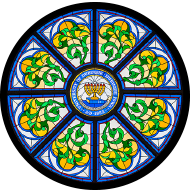UD Sociology Class Presents: UD's Hapa Project
Apr 23, 2008 | University of Dubuque Theological Seminary
Professor Alice Oleson and students from the University's Sociology 311: Inequalities of Race, Class, and Gender will host an Art Opening and Reception for UD's Hapa Project on Wednesday, April 23 at 7:00 p.m. in the Couchman Reading Room, Charles C. Myers Library, on the University campus. The exhibit will remain on display through May 11.
From 7:00 - 8:00 p.m., guests will have the opportunity to view the nearly 60 photos and hand-written statements that make up UD's Hapa Project (while enjoying delicious food, no less!) Beginning at 8:00 p.m., six student-poets will read from their original work which addresses issues of identity in their own lives.
"The Hapa Project shows the amazing ways in which visual art and poetry can speak powerful social truths that bring communities together," commented Professor Oleson.
The word Hapa, once a derogatory slang term originating from the Hawaiian word for "half," has since been embraced as a term of pride for many people of mixed racial heritage including those of Asian or Pacific Island descent. Hapa took on a different meaning after Kip Fulbeck, an artist, photographer, filmmaker, and teacher in Asian American and Film studies at the University of California, Santa Barbara, began taking photographs for his web site www.hapaproject.com in 2002.
One of the purposes of the Hapa Project is to show that people are quick to judge someone's ethnicity by looks alone. The fundamental vision of the Hapa Project is that we are all individuals with separate identities and have the right to claim these identities for ourselves.
The subjects of the Hapa Project include people from every conceivable walk of life from infancy to old age. Fulbeck designed this project to contrast how people are perceived by others versus how people see themselves. There are three basic parameters for this project:
- The person is photographed head-on, bare from the collarbone up, without heavy make-up, jewelry, or glasses, and without expression. Each person has the option to see and approve his or her image.
- Each person's "official" ethnic background is listed.
- Beneath this, and in his or her own handwriting, each person writes a personal response to the question "What are you?"





